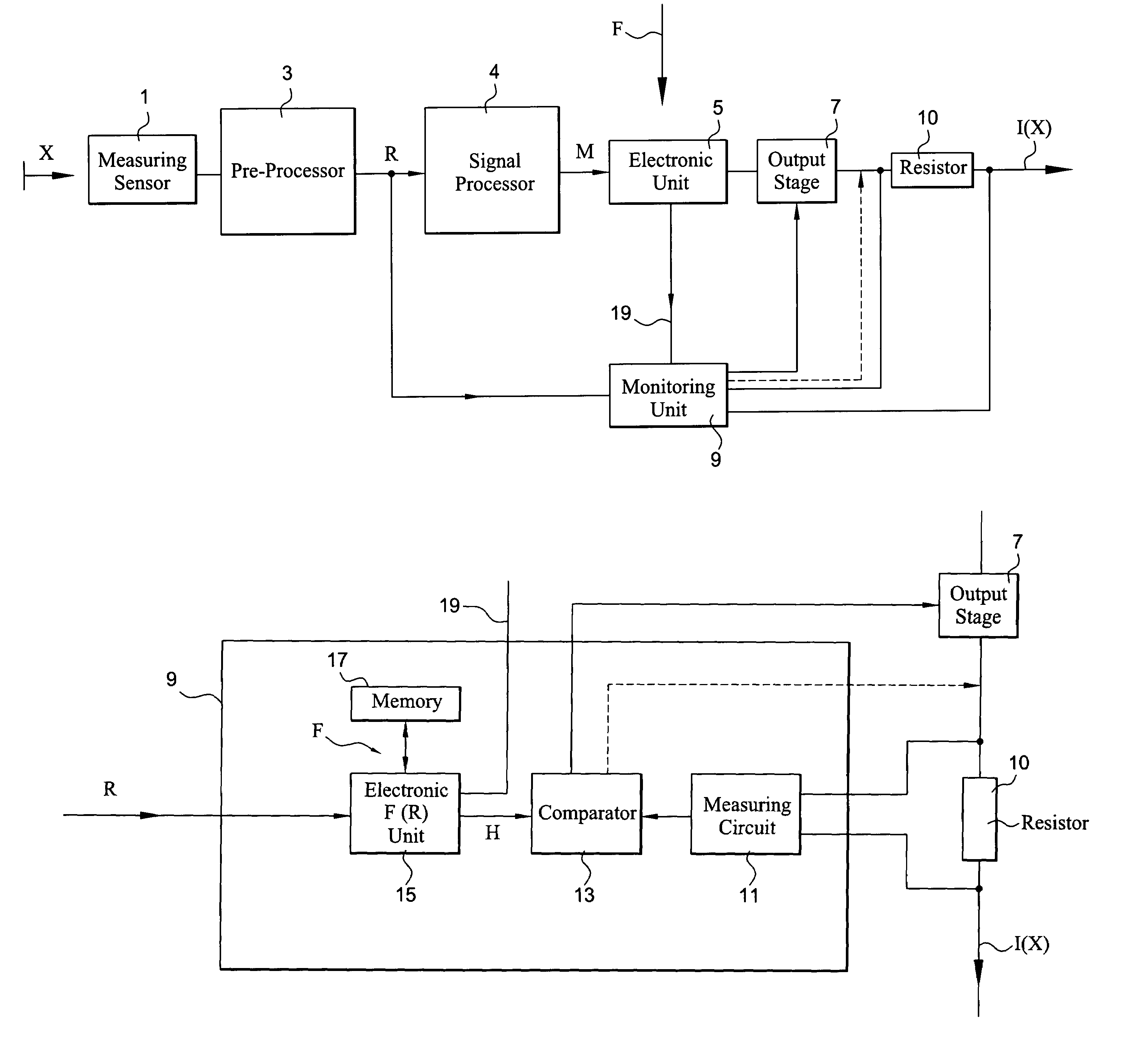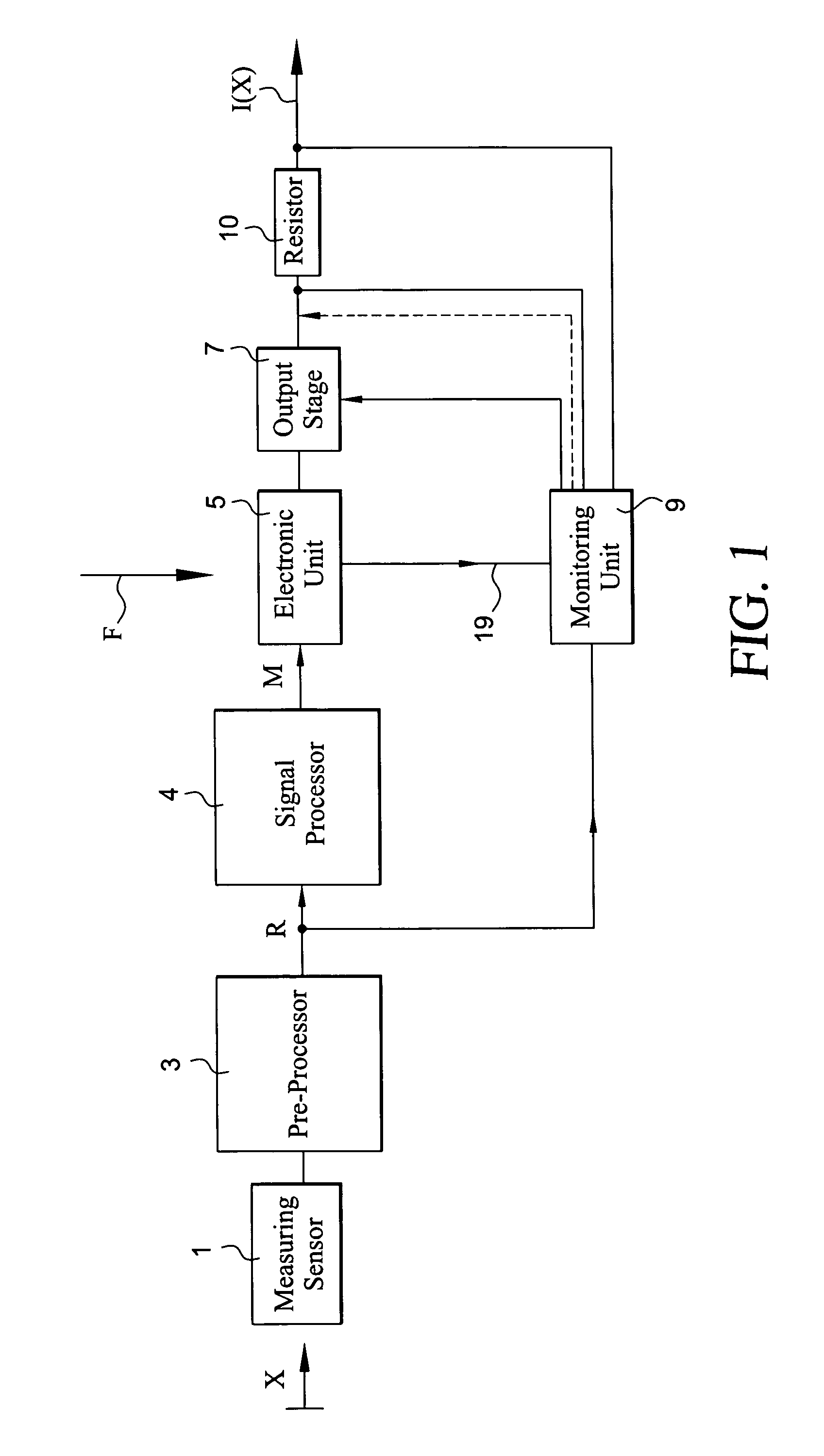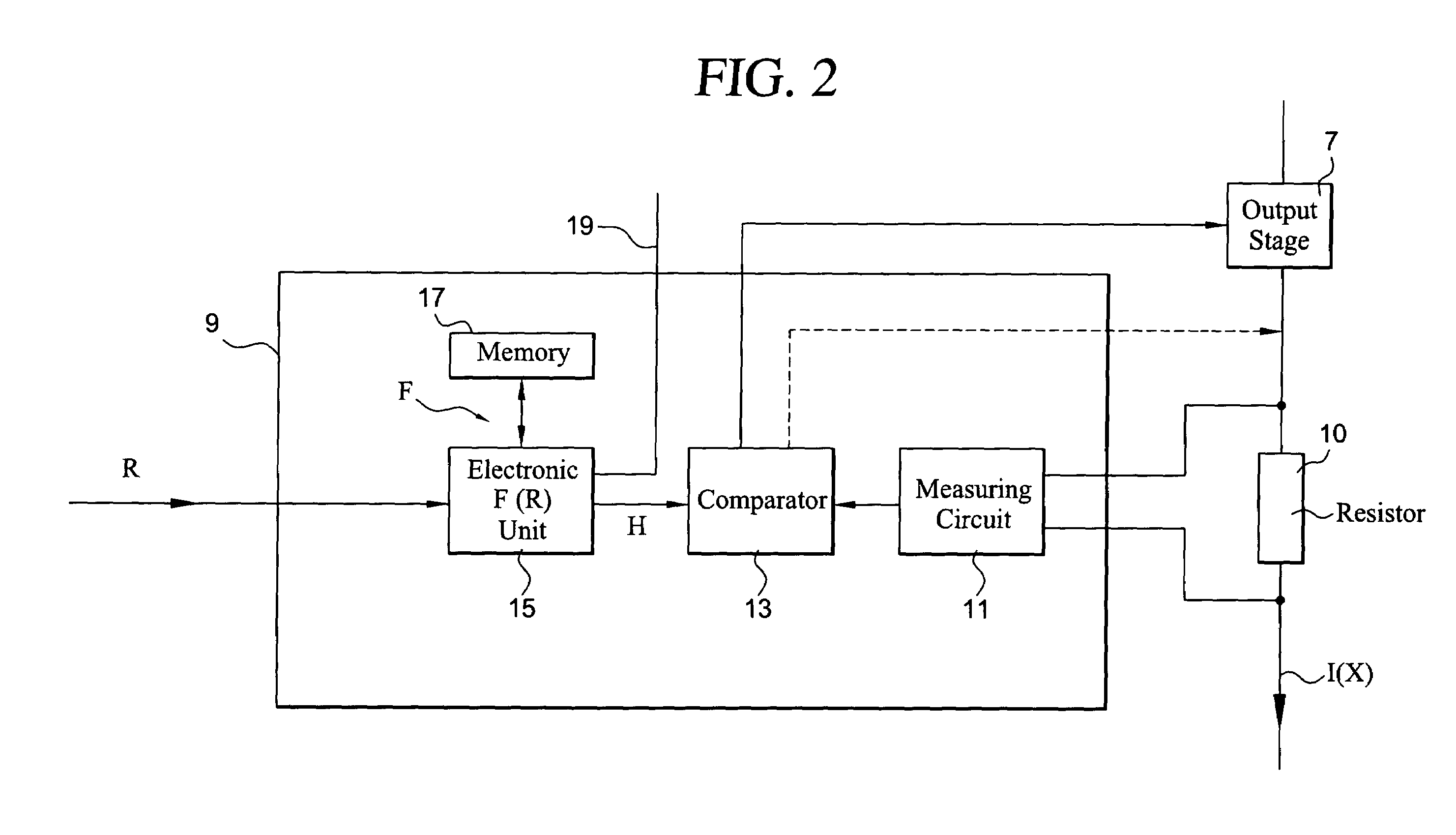Transmitter
- Summary
- Abstract
- Description
- Claims
- Application Information
AI Technical Summary
Benefits of technology
Problems solved by technology
Method used
Image
Examples
Embodiment Construction
[0029]The transmitter contains a measuring sensor 1, which serves for registering a physical parameter X and transducing such into an electrical quantity. The sensor can be e.g. a pressure-, temperature-, flow-, or fill-level-sensor. The physical parameter X affects the measuring sensor 1, and the sensor, in turn, issues an electrical quantity corresponding to a present, measured value of the physical parameter X. The electrical quantity is fed to a signal pre-processor 3 serving for converting the electrical quantity into a raw signal R, which is available for a further processing and / or evaluation. For this, the electrical quantity is e.g. amplified and / or filtered.
[0030]The raw signal R is converted into a measurement signal M by a following signal processor 4. Here, e.g. compensation of a possible temperature dependence of the raw signal is done. Also, corrections and adjustments resulting from e.g. sensor-specific characteristic curves or compensation- and / or calibration-data c...
PUM
 Login to View More
Login to View More Abstract
Description
Claims
Application Information
 Login to View More
Login to View More - R&D
- Intellectual Property
- Life Sciences
- Materials
- Tech Scout
- Unparalleled Data Quality
- Higher Quality Content
- 60% Fewer Hallucinations
Browse by: Latest US Patents, China's latest patents, Technical Efficacy Thesaurus, Application Domain, Technology Topic, Popular Technical Reports.
© 2025 PatSnap. All rights reserved.Legal|Privacy policy|Modern Slavery Act Transparency Statement|Sitemap|About US| Contact US: help@patsnap.com



